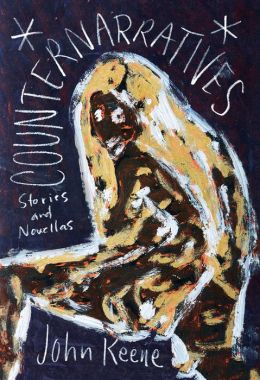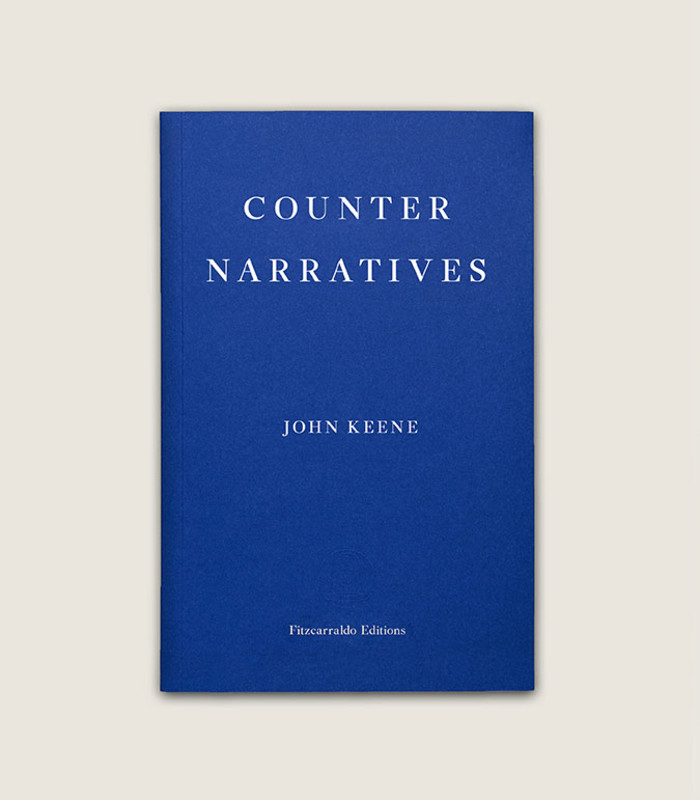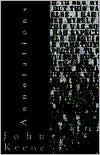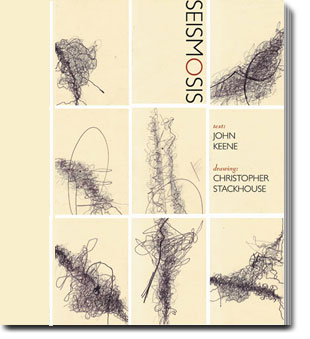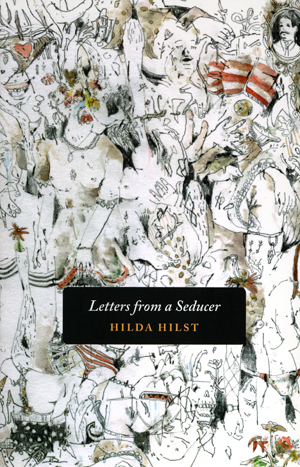On Monday, as I mentioned in my post about my
HuffPost Live appearance, I gave a reading at
Rutgers-Newark as part of the
African American and African Studies Fall 2015 event series. This was actually the second time I read from
Counternarratives at the university, though the first since the book was published back in May. Previously I had read "Mannahatta" at the MFA program reading back in 2013, but this time, I read "
Acrobatique," and, for an encore, two short sections from "The Aeronauts."
Though the reading coincided with the MFA program's workshop period, a full crowd filled the room, with many colleagues and students present, as well as members of the Newark community; the question and answer session was lively; and I sold and signed a handful of books. A free reception with lots of delicious food followed.
Below is a short film by
Justine Hunter with some video clips and a voice-over of me reading. Many thanks to Justine, and to departmental administrator
Christina Strasburger and administrative assistant
Rabeya Rahman, as well the
Dana Library, for making this wonderful event possible!
***
The good reviews keep rolling in, thank the gods.
Brad Johnson, a bookseller and critic, penned and published one the most laudatory reviews of
Counternarratives to appear thus far, in
The Quarterly Conversation. I am especially pleased that Johnson connected the collection's themes to today's local and national events, and identified the political consciousness informing the stories. Like several other readers, he views it almost as a novel in stories: A quote:
This is the context of John Keene’s ambitious collection of stories and novellas, Counternarratives. Though many of these were published elsewhere, together they read very much like the multi-genre, patchwork novels of Alexander Kluge—or perhaps more grandly still, László Krasznahorkai’s recent Seiobo There Below, a work bound not by plotted coherence but by a conceptual aesthetic thriving on difference. This is to say, while Counternarratives makes no claim to being a “novel of short stories,” its epic sweep and conceptual unity bear the marks. Indeed, one might speculate further that this “story collection” lives up to its title and effectively challenges—like Kluge and Krasznahorkai (among others)—the commonplace sense of how a novel should look and what it should do.
In
Front Porch Journal, a journal published by MFA students at Texas State University,
critic Patrick Cline praised Counternarratives, with a focus on its aesthetics, which we discussed further in a conversation with Book Reviews editor
Michaela Hansen. One quote:
To this reader, the chameleon-like range of the writing is impressive. The book as a whole feels like an entry from Oulipo, the French writer’s collective devoted to prompts and restrictions, but like a really good Oulipo book. One whose writer is invigorated by the challenge posed by each prompt, and uses each as an opportunity to explore his pet themes—freedom and control, legacy and hauntings, the influences of religion, and queer love throughout history. Each story is a surprise and a success, and cumulatively they come together to feel vital. This is an important book—it’s important to own, to read, to teach, and to slip in your shelf beside the classic narratives that it’s in conversation with.
In
Full Stop, reviewer Patrick Disselhorst offers kudos through and amid a perceptive reading of
Counternarratives that
gets the relationship between the written and the oral, the constructedness of narration and of lives, and the power of fiction to reorient not just our thinking, but our vision of the world. He writes of a sentence in the first story, "Mannahatta":
Keene’s long sentence meanders and searches for something to grasp ahold of. But, the lack of specificity, the lack of demarcations, is inherent to his character’s predicament. Rodriquez [sic], Keene alerts the reader in the introductory note to the story’s initial publication in TriQuarterly, as “a mulatto . . . of San Domingo,” the son of a Portuguese father and African mother, complicates the reader’s understanding of New York. The first settler of the city, simultaneously African, Dominican, and Latin American, is underrecognized, but in this story, he emerges, “never to return to the Jonge Tobias, or any other ship, nor to the narrow alleys of Amsterdam or his native Hispaniola.” Rodriquez [sic] functions as our introductory figure to the text — a man of African descent arrives as a settler, and along with him, an alternative understanding of how the Americas were initially constituted. Keene trains the reader to be alert to openness; to view things singularly involves a lack of foresight in watching figures or situations brush up against received knowledge.
***
Three of the best interviews and conversations I've participated in have recently been published. In conjunction with the
Front Porch Journal review, which I link to above, I chatted with Book Reviews Editor Michaela Hansen and reviewer Patrick Cline, who sent me a set of questions, and then sent a few more based on my first set of responses.
In this interview, titled "Countering the Narrative," I love how much they delved into the stories and how curious Patrick was about the relevance and effects of a post-modernist approach:
FP: Hmm, I suppose it’s the stylistic pastiches of “Encounternarratives” that I’m asking about. The styles invoked seem to correspond to the historical moment of each story—an impressionistic style in “Acrobatique” to capture an impressionist subject, the cacophony of languages in “Cold” at a time when it seemed that art was working to capture exactly that (e.g. Dada, Eliot)—as well as the subjects. I think what I was most struck by was that the stories seem to exhibit no fear of Yvor Winters’ “imitative fallacy”—that they’re fully willing to invent new stylistic modes simply to accurately capture varieties of experience, without reflexively casting doubt their ability to do so. I’m wondering if the justification of pastiche affords them this boldness.
JK: Your identification of the historicization embedded in the stories’ forms is a great one. I do wonder, though are these fully stylistic “pastiches”? Of Modernist prose? Or does “pastiche” function as one of many modes in them and all the volume’s narratives? I see the forms and styles as apt textual embodiments and enactments of the stories’ themes. To put it another way, the prose forms and texts here serve not merely as presentations but as partial representations of the narratives they convey, which is to say, they possess a mimetic function or component, which is, admittedly, fairly uncommon in contemporary American literature. With “Acrobatique,” the prose visually mirrors the story’s progression but also its central ideas. In popular memory, the specificity of Miss La La had become as lost to us as any single thread within the vast tapestry of Degas’s artistic output. That recovered thread, via my imagination, is the one the story hangs on. As for Winters, I suppose I read his “imitative fallacy” as too proscriptive, which is always a spur to defiance. How did Caliban put it in The Tempest? “I’ll have none on’t.” Or as Elizabeth Alexander has written, “Oh language/my trinket, my dialect bucket,/my bracelet of flesh.” If we listened too closely to Winters, we’d lose a sizable swath of our literary treasures, and not just those from modernism—or post-modernism—o
Earlier this summer, writer and reviewer
Blake Butler conducted an interview with me for
VICE. We spoke by phone around the time of the book launches, and some of what we discussed I've since repeated several times, but the conversation was free-wheeling and I felt particularly expansive at times. At one point we discussed current approaches to teaching
Mark Twain's The Adventures of Huckleberry Finn:
I remember maybe it was like five years ago when they were trying to get the racial slurs removed from Huck Finn, or at least change them to a different word. Do you think of a practice like that versus going in and exposing the trouble from a completely different way?
I feel like we shouldn't whitewash anything. Because Huckleberry Finn, and any number of such books, are artifacts of our history. And I think if you're teaching it to a younger person then the teacher should frame it. You don't want to say, "This is a bad book, this is a good book." You want to say: "This term will appear here, and we want to understand why it is in here. So one of the things we are going to think about while we're reading—and it's not going to be easy—[is] why do you think this term appears in here and what does it tell us about the moment, the era, the time in which it was written?"
I think this is actually very, very powerful for students. But it's the role of the teacher to contextualize and assist the students in understanding why a book reads the way it does. This is not just in the matter of race and racism, but gender and misogyny, and homophobia and classism in certain kinds of books. Because if a book is a very good book on most levels, we want to understand not only why it's a good book and its successes, but also what are its failures? What is problematic about it? Not just a book, but any work of art. What is succeeding in it, and also what isn't succeeding?

Last but not least, while at
Image Text Ithaca I participated in a long, remarkable conversation with poet, critic and scholar
Tonya Foster, whose new, stellar collection of poems
A Swarm of Bees in High Court has just been published by New York publisher Belladonna*. The conversation appears in the new Fall 2015 issue of
BOMB Magazine, and so is not online yet (I think it'll appear in full once the next issue goes to press), but an excerpt, titled "Haikus of Grief, Silence in Harlem," did appear on
LitHub, the new aggregator site sponsored by several major New York publishers.
Though it's a tiny sliver of our exchange, and zeroes in on questions of grief and trauma in Tonya's collection, it offers a distilled taste of what we both were thinking and had to say. I can't wait to post the full version, and please do grab a copy of
BOMB to read it if you can.
From
LitHub:
John Keene: In the notes at the end of your new poetry book, A Swarm of Bees in High Court, you describe it as “a biography of life in the day of a particular neighborhood,” and you use the phrase “the multiple as subject and as swarm of actors.” Based on those descriptions you could have written a nonfiction text or a more literal reflection, but you’re capturing this world in a lyric mode, undertaking compelling things with form.
What really comes through is a play of both the ear—sound, music, and noise, in the positive sense of the term, as distortion—and also the eye. Could you talk about how you decided to go with the haiku-like form, which you stick to at certain points, and you break in others? At the very end we get a little section of prose, almost like a fable.
Tonya: The first thing that comes to mind is Amiri Baraka saying, “You know, I would read poems in The New Yorker and think, I can’t write poems like that.” (laughter) The work of the book began when someone asked me to write about 9/11, and I thought, What? It just seemed bizarre.
How do you write about grief when you’re in the middle of it? How do you imagine or traverse that necessary distance? I had been writing erotic haiku to a man I liked. And someone else said, “Why don’t you write haiku about 9/11?” I thought, Okay, I could do that and not weep, right? I could write these little condensed pieces about New York at that period. It was a time when there were these condensed, very tense encounters with the images of people who were missing—but not only with them; you were also encountering the people missing them, looking for them.
 I have just returned from an amazing three-day trip to Jackson, Wyoming, where I participated in a several events sponsored by and held at the Teton County Library and the Teton County Library Foundation. Poet and exceptional host Leah Shlachter was the organizer, and brilliant poet Tyehimba Jess (whose masterpiece Olio drops from Wave Books very soon!) invited fellow brilliant poet and thinker Tonya Foster, author of Swarm of Bees In High Court (Belladonna*, 2015), and me to join him in exploring the topic "The Changing Color of American Literature," through a group reading and lively panel discussion at the Teton County Library. It was a pleasure to join Tyehimba and Tonya in conversation over several days, which also included a visit to and writing workshop with Matt Daly's creative writing class(es) at the Journeys School of
Teton Science Schools.
I have just returned from an amazing three-day trip to Jackson, Wyoming, where I participated in a several events sponsored by and held at the Teton County Library and the Teton County Library Foundation. Poet and exceptional host Leah Shlachter was the organizer, and brilliant poet Tyehimba Jess (whose masterpiece Olio drops from Wave Books very soon!) invited fellow brilliant poet and thinker Tonya Foster, author of Swarm of Bees In High Court (Belladonna*, 2015), and me to join him in exploring the topic "The Changing Color of American Literature," through a group reading and lively panel discussion at the Teton County Library. It was a pleasure to join Tyehimba and Tonya in conversation over several days, which also included a visit to and writing workshop with Matt Daly's creative writing class(es) at the Journeys School of
Teton Science Schools.












































